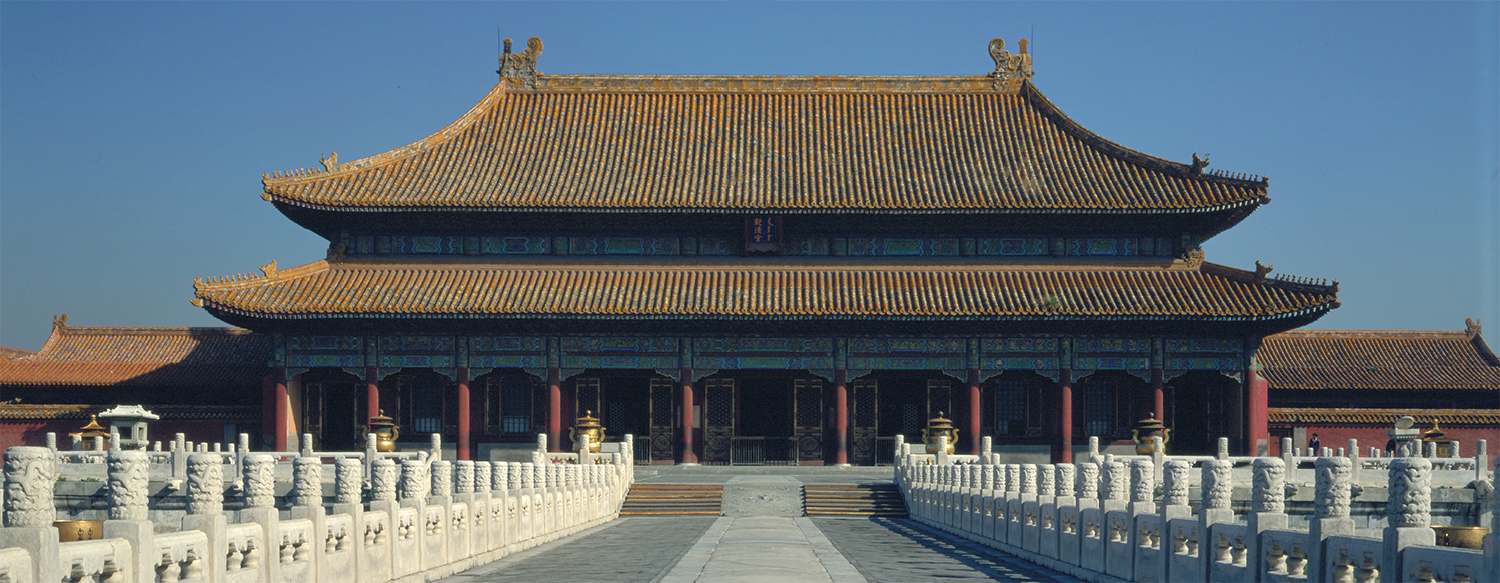乾清宮外景
Outside the Palace of Heavenly Purity.
The Palace of Heavenly Purity (Qianqing Gong)
The Palace of Heavenly Purity is one of the three main palaces in the inner court of the Forbidden City. It was reconstructed several times during the Ming and Qing dynasties.
From the Ming Dynasty to the early Qing time, it served as the emperor's dwelling palace. After Emperor Yongzheng (1723- 1735) of the Qing Dynasty ascended the throne, he lived in the Hall of Mental Cultivation (Yangxin dian), and the Palace of Heavenly Purity began to be used for banquets on important festivals such as the Chinese New Year. Emperors Kangxi and Qianlong once held banquets here to entertain seniors to show respect for the elderly.
After the death of the emperor, his coffin was laid here, symbolizing a peaceful death. There is a tall stone platform on the eastern and western sides of the Palace of Heavenly Purity, respectively, on which is a gilt copper pavilion that symbolizes everlasting rule and national peace.
Inside the palace, a plaque hangs engraved with four Chinese characters, "正大光明", which mean "Justice and Brightness".
From the time of Emperor Yongzheng, the name of the crown prince would be written on two imperial edicts in duplicate. A copy would be kept by the emperor himself, and the other would be placed in a box behind this plaque. Only if the names on the two edicts were verified to be the same would the designated prince take the crown upon the death of the emperor.
As the most important building in the inner court of the Forbidden City, the Palace of Heavenly Purity features a double-eave hip roof and nine mythical animals on each corner ridge, surpassed only by the Hall of Supreme Harmony.
乾清宮內景
Inside the Palace of Heavenly Purity.
乾清宮
乾清宮是紫禁城內廷后三宮之一,明清兩朝曾多次重修。
這里自明代至清初一直是皇帝寢宮,清代雍正皇帝即位后,移居到西側養心殿。乾清宮則用于元旦等重要節日舉行宴會。康熙、乾隆皇帝曾在此舉行千叟宴,宴請年長臣民,以示尊老。皇帝去世后,靈柩停放于此,象征壽終正寢。乾清宮外東西兩側,各有一座高大的石臺,臺上分別置銅鎏金江山、社稷亭,象征江山永固、社稷長安。
乾清宮內懸掛“正大光明”匾。清代自雍正帝開始實行“秘密立儲”,即皇帝在位期間,寫下繼承人的名字,一式兩份,一份隨身攜帶,另一份則藏于正大光明匾后。皇帝臨終或突然去世后,由大臣當眾取出匾后詔書,兩份核對無誤,方可宣布皇位繼承者。
乾清宮作為紫禁城內廷最重要的宮殿,采用重檐廡殿頂,檐角脊獸9只,等級僅次于太和殿。


